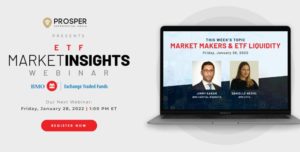By Dale Roberts, cutthecrapinvesting
Special to the Financial Independence Hub
It is a common question from readers. How do I create reliable retirement income with ETFs? It is a simple answer if we consider the last 40 years. A simple mix of Canadian, U.S. and International stocks has provided the necessary growth component. Core bond funds have offered the required risk management. Stocks for offense. Bonds for defense. A typical balanced or balanced growth couch potato portfolio did the trick. Today, we’ll look at the 2021 returns for retirement ETF portfolios.
In early 2019 I posted the simple 7-ETF portfolio for retirees. Please have a read of that post for background on the ETFs, risk, and the retirement scenario.
Seek retirement and investment advice
You can self-direct your investments if you have the knowledge and you understand your risk tolerance level. But I’d suggest that you contact an experienced fee-for-service financial planner who has expertise in the retirement arena. With a fee-for-service advisor you will pay as you go. You can pay by the hour, or perhaps pay a flat fee for the evaluation and plan. You might then set off on your own to build the portfolio with all the right pieces in the right place.
I’d also suggest that you read my review of Retirement Income For Life: Spending More Without Saving More. That’s a wonderful staple read for retirees and retirement planners. The author, Frederick Vettese, was the chief actuary at Morneau Shepell.
Your retirement ETF will be one piece of the retirement funding plan. The following represents a model for consideration and evaluation.
The 7-ETF Portfolio for Canadian retirees

You may choose to go more aggressive or more conservative in your approach. And keep in mind the above is not advice, but ideas for consideration. That said, I do see it as a sensible conservative mix. You may decide to add more inflation protection by way of energy stocks or commodities.
And let’s cut to the retirement funding chase. Here’s the returns for the 7-ETF portfolio for retirees for 2021. Charts and tables are courtesy of portfoliovisualizer.com

Yup, that simple mix delivered a return of 13.8% in 2021. That is a very good return for a conservative mix that has a 45% bond allocation.
For risk and return benchmarks have a look at …
The ultimate asset allocation ETFs page.
Here’s the returns of the individual assets for 2021.

With inflation fears dominating the back half of 2021 the inflation-sensitive assets of the Canadian High Dividend VDY and REITs performed very well. Keep in mind that two of the assets are in U.S. Dollars. You can substitute and use Canadian Dollar holdings. See the original 7-ETF post.
At Questrade you will hold dual currency (U.S. and Canadian dollar) accounts. You can buy ETFs for free.
Vanguard VRIF ETF for retirement
Recently I also looked at Vanguard’s VRIF Retirement ETF. That retirement funding ETF delivered a very nice income increase for 2022.
Here’s the VRIF distribution scorecard
Distributions per share.
- 2020 0.83
- 2021 0.87 (4.5% increase)
- 2022 0.94 (7.6% increase)
The portfolio income
Portfolio visualizer offers that the starting yield (2021) in the 7-ETF portfolio would be in the area of 2.8%. You will sell assets to create additional income.
Creating that retirement income
You may choose to ‘fund as you go’. While you will have portfolio income (from bonds and dividends) that is accumulating, you will likely have to sell assets to create the desired portfolio income. The basic idea of asset harvesting would be to keep the portfolio close to the original asset weighting. You do not have to be exact in this regard.
You may choose to sell assets monthly, quarterly, or you may even move the assets to a cash (ETF) at the beginning of the year to ensure that you have your retirement income for the year safely stored in cash. Of course, consider fees and taxes.
Retirement spend rate
Here’s an example of a 4.8% spend rate. That is to say, each year you would spend 4.8% of the initial total portfolio value. Each $100,000 would create $4,800 of income, before taxes, each year. A $1,000,000 portfolio would deliver $48,000 of annual income, before taxes.
The chart runs from January of 2015 to end of 2021. This is for demonstration purposes. I have not adjusted for inflation.

So the good news for this simple mix of ETFs is that you would have enjoyed a decent spend rate and the portfolio value would have increased by 17.4%. Of course it is favorable to have a buffer to weather the storms such as the great financial crisis that began in 2008, or the dot-com crash of the early 2000’s. An increasing portfolio value will offer that much-welcomed cushion.
The bonds and cash help in that regard as well – to protect against severe market corrections.
Sequence of returns risk
We need to manage the sequence of returns risk in retirement.
And keep in mind that we enter the retirement risk zone about 10 years previous to our retirement start date. We need to de-risk and prepare the portfolio well in advance.
And here is an interesting approach. You can remove sequence of returns risk (entirely) by going very conservative as you begin retirement. You would then increase your stock allocation (and growth potential) in retirement. That is called a retirement equity glidepath.
A portfolio spend rate example
Here’s an example with the 4.8% spend rate from the year 2000. That is a very unfortunate start date as 2000 is the first year of the dot-com crash. U.S. markets were down three years in a row. Canadian markets suffered as well.

We see that the Balanced Portfolio is still chugging along in 2021, while the all-equity global portfolio went to zero in 2017. We have to protect against an unfortunate start date.
Keep in mind that there are many periods when the most optimal option is an all-equity or equity-heavy portfolio that would provide greater retirement income. But with an aggressive portfolio you run the risk of retiring and running head first into a severe market correction. You don’t want to gamble and hope that you get lucky. Most retirement specialists would recommend a Balanced or Balanced Growth model. Continue Reading…








